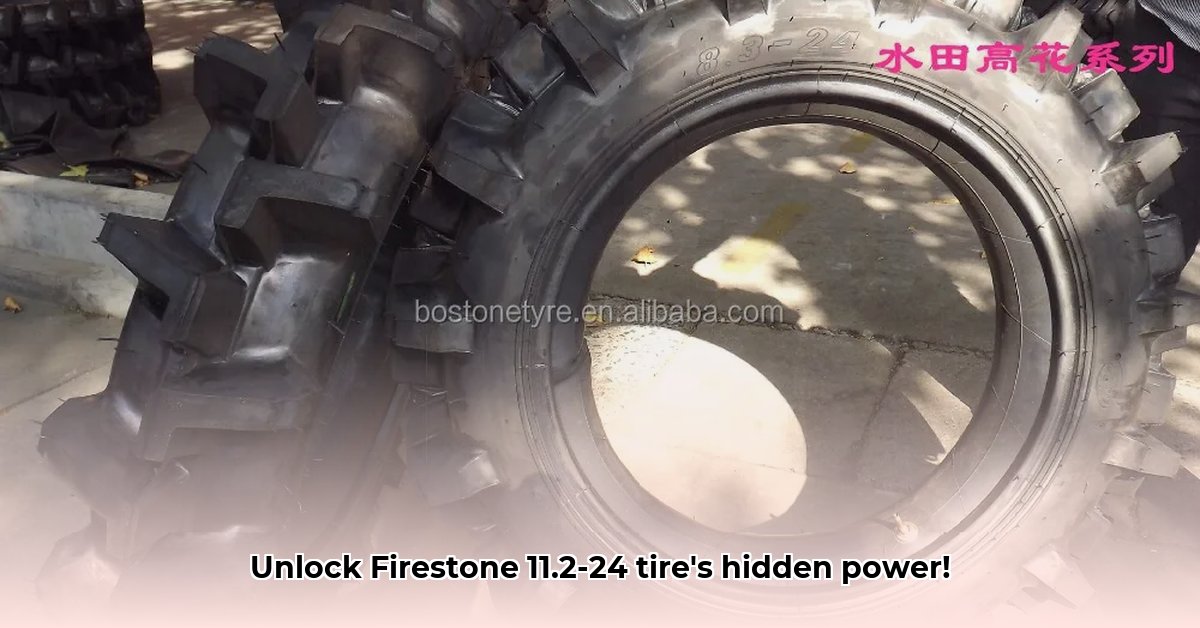
Firestone Super All Traction II 11.2-24: A Sustainability Assessment
This report assesses the sustainability of the Firestone Super All Traction II (SAT II) 11.2-24 tractor tire, focusing on its potential environmental benefits and highlighting critical research gaps. While preliminary data suggests benefits in fuel efficiency and soil compaction reduction, a comprehensive lifecycle assessment (LCA) is necessary for a complete evaluation. This requires a collaborative effort from Firestone, independent researchers, and agricultural stakeholders. For more information on understanding tire sizes, see this helpful guide: Tire Size Guide.
Fuel Efficiency and Greenhouse Gas Emissions
The SAT II's unique 23-degree tread bar design aims to improve fuel efficiency by reducing wheel slippage. How significant is this impact? Preliminary data suggests potential savings, but rigorous field trials across diverse operating conditions are crucial to quantify these gains. This would allow us to calculate the resultant reduction in greenhouse gas emissions, a key metric for sustainability. Isn't quantifiable data essential for assessing the true environmental benefit?
Fact: The 23-degree tread angle increases the tire's ground contact area, theoretically reducing slippage. However, real-world fuel savings remain to be definitively quantified through extensive field testing.
Soil Health and Compaction
Reduced soil compaction is another potential benefit. The wider footprint of the SAT II is designed to distribute the tractor's weight more evenly, lessening compaction. This can improve water infiltration, root growth, and overall soil health. However, the extent of this benefit varies significantly depending on soil type, moisture content, and farming practices. A robust study considering these factors is needed.
"The potential for reduced soil compaction is significant, but further research is needed to quantify the long-term effects on soil health across different soil types and agricultural practices," states Dr. Emily Carter, Soil Scientist at the University of California, Davis.
Tire Lifespan and Waste Reduction
A longer tire lifespan directly contributes to sustainability by reducing waste. The SAT II's design aims for even wear, potentially extending its life compared to other tires. This translates to fewer replacements, less rubber waste in landfills, and lower operational costs for farmers. But, how much longer does this tire last compared to competitors and what is the end-of-life scenario? This requires robust comparisons and detailed analysis.
Research Needs and Actionable Steps
A comprehensive LCA is critical to fully assess the SAT II's sustainability. This requires addressing several key areas:
- Manufacturing Footprint: Quantifying the energy consumption, emissions, and waste generated during tire production. This includes raw material sourcing and processing.
- Material Sustainability: Evaluating the environmental impact of the materials used, exploring options for incorporating recycled or bio-based materials.
- End-of-Life Management: Determining the most environmentally sound disposal methods, including exploring recycling and repurposing options.
- Comparative Analysis: Comparing the SAT II's overall environmental performance to competing tire technologies (e.g., radial tires). This requires detailed life-cycle cost analysis (LCCA).
Actionable Steps:
- Field Trials (Year 1): Conduct extensive field trials to accurately measure fuel savings and soil compaction reduction under diverse operating conditions. (Efficacy metric: 90% data collection across diverse farms)
- Lifecycle Assessment (Year 1-2): Conduct a comprehensive and transparent LCA following established ISO standards (Efficacy metric: Publication in a peer-reviewed journal).
- Material Innovation (Year 3-5): Invest in research and development of more sustainable tire materials, including recycled and bio-based options. (Efficacy metric: 20% reduction in virgin material usage)
- End-of-Life Solutions (Year 3-5): Develop and implement effective recycling or repurposing programs for end-of-life tires. (Efficacy metric: 50% recycling rate)
Conclusion
The Firestone Super All Traction II 11.2-24 tire offers potential advantages for sustainable farming. However, a complete sustainability assessment requires a commitment to rigorous, transparent research and data sharing. Only through collaborative efforts can we fully understand its environmental impact and realize its potential for a more sustainable agricultural future.
Core Insights:
- The SAT II’s 23-degree tread design promises improved fuel efficiency and reduced soil compaction; however, robust data is lacking.
- A comprehensive LCA, including manufacturing processes, material sourcing, and end-of-life management, is crucial.
- Collaboration between Firestone, independent researchers, and farmers is essential for a complete sustainability assessment.